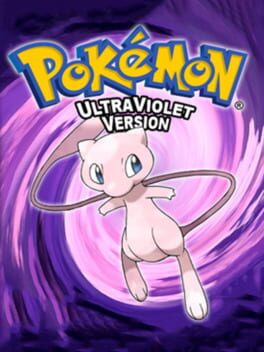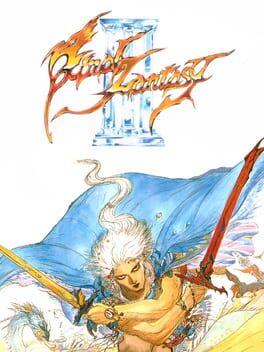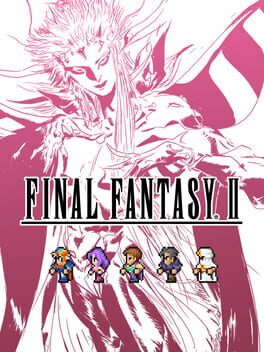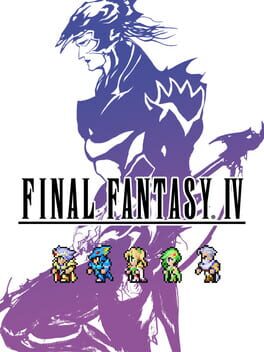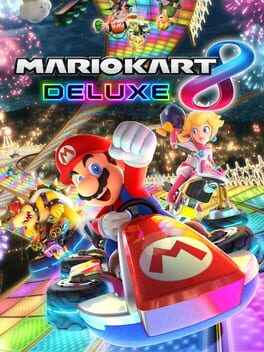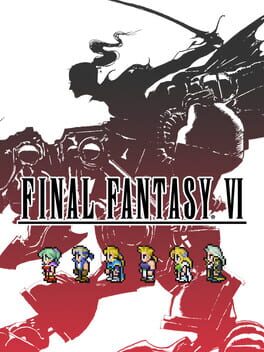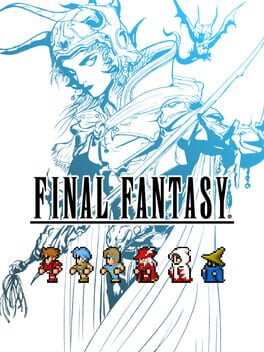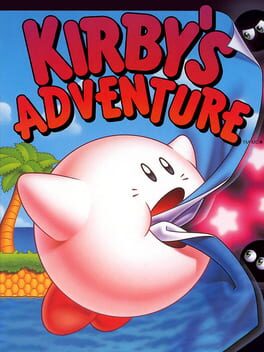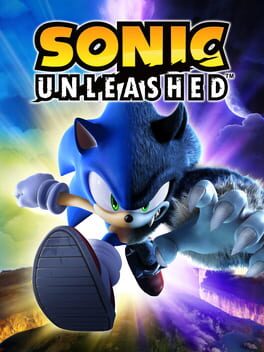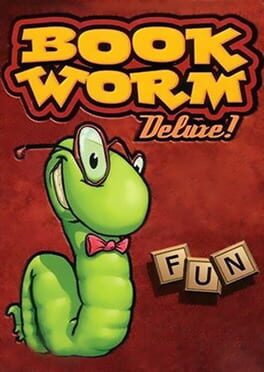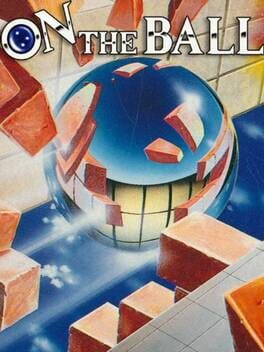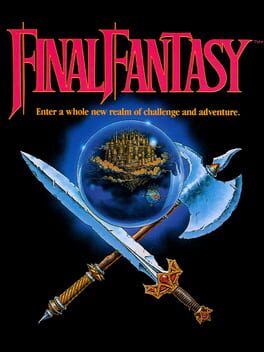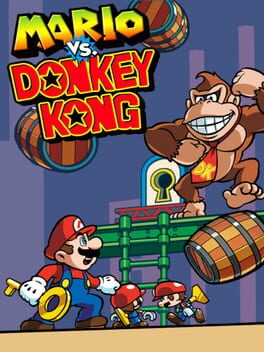spykor
I don't really like the Gen 3 Kanto games, but they are, if nothing else, easy to pick up and play. Ultra Violet is basically an extension of the Gen 3 Kanto games, adding all the Pokemon from Gens 1, 2, & 3 accessible via new areas and events and removing trade evolutions and other barriers.
Which is fine in theory, but it doesn't really amount to much. A game like this makes you realize why starters are starters - among the expanded starter pool is Larvitar, a Pokemon that doesn't reach it's final evolution stage until level 55. I love Tyranitar, but for the Kanto level curve, this is completely unreasonable as only the Elite 4 have anything near this level. You could also start with Gastly, who can't hit any of the earlygame Normal types. They aren't all terrible options, but the game isn't quite tuned for them.
The other trouble is that the vast majority of the new content in the main game is on 4 Points Isle, which, for lack of a better word is very "ROM-hacky". It doesn't fit in with the rest of the world. The map is cute, but the wild area is a bit barren. The concept of an area where battling is illegal doesn't really make sense in Pokemon, and the kid mayors and set of NPCs who won't ever talk to you are just silly, as is the labyrinth. It also takes a while to get there, inaccessible until you get to Vermilion, at which point you've probably started putting somewhat of a team together.
Honestly, it's alright, but it's very much "Gen 3 Kanto with bonus content" - not really enough is immersed in the game to make it a marked improvement. It's neat, but that's about it.
Which is fine in theory, but it doesn't really amount to much. A game like this makes you realize why starters are starters - among the expanded starter pool is Larvitar, a Pokemon that doesn't reach it's final evolution stage until level 55. I love Tyranitar, but for the Kanto level curve, this is completely unreasonable as only the Elite 4 have anything near this level. You could also start with Gastly, who can't hit any of the earlygame Normal types. They aren't all terrible options, but the game isn't quite tuned for them.
The other trouble is that the vast majority of the new content in the main game is on 4 Points Isle, which, for lack of a better word is very "ROM-hacky". It doesn't fit in with the rest of the world. The map is cute, but the wild area is a bit barren. The concept of an area where battling is illegal doesn't really make sense in Pokemon, and the kid mayors and set of NPCs who won't ever talk to you are just silly, as is the labyrinth. It also takes a while to get there, inaccessible until you get to Vermilion, at which point you've probably started putting somewhat of a team together.
Honestly, it's alright, but it's very much "Gen 3 Kanto with bonus content" - not really enough is immersed in the game to make it a marked improvement. It's neat, but that's about it.
1990
I’ll start off by saying: thank god I played the Pixel Remaster first. Unlike FFI PR, which mostly kept things the same and fixed bugs, FFIII PR changed some fundamental aspects of the NES version, keeping things largely faithful in terms of vision, but altering technicalities and tedious concepts from the original. FFIII NES is a much less flexible version of the game with a strong dependence on a single stat:
Job Level. Job Level causes tons of problems in the original FFIII and actively punishes you for trying out new classes (which cost capacity to move between) by reducing your hit rates, number of hits, spell damage, spell accuracy, and other things if you’re fresh in a class. It isn’t awful in theory: build up your skills to become competent in a class. In practice, however, moving from one class to another heavily nerfs your initial abilities. Base classes from the Earth Crystal and Eureka at least have competent bases, so becoming a Devout won’t kill your healing and becoming a Ninja won’t make you miss all the time, but jobs from the first three crystals all suffer from this, with the added bonuses that skills are non-transferable, so leveling as a Red Mage and learning both Black and White magic won’t help you if you decide to change into a Black or White Mage later on.
There are also sections where you basically need particular classes (Dragoon for Saronia, Magic Knight for Cave of Shadows, magic wielding classes for every mini dungeon), and freshly reclassing into them will hamper your ability a lot. If you want to defeat Garuda, simply reclassing to Dragoon isn’t enough – you have to grind outside Saronia Castle to make your Job Level not pitiful in order to do meaningful damage to him and not simply miss on your jump attacks. Same thing with magic, which is your only real option to get through the dungeons where you’re forced to be mini (not all classes have Run, and Run can miss a lot more in this game – I suppose you could Escape with a thief, but I don’t think that’s the intended design). Being a fresh Job Level 1 Black Mage would just render your spells completely ineffective.
Speaking of dungeons, in classic final fantasy fashion, they’re all over the place. The mini dungeons are awful, as mentioned above, but the dungeon quality collapses over the course of the game. Early (non-mini) dungeons are largely good, and several of the optional dungeons are alright, if a bit small (especially compared to the nearly 10 floor Tower of Owen at the beginning of the game, why is Bahamut’s Lair just three rooms?). The endgame dungeons are insane, and heavily dependent on invisible wall mechanics, where you just kind of meander through (read: look up a map online and follow the path). Combined with a point of no return and no external healing, this pattern of dungeons getting worse and worse concludes in the World of Darkness, where you fight four bosses (of very high difficulty) who each have a room with invisible walls to get through, and then the final boss after all of that. If you go in without grinding you are going to get bodied.
It's not good! I don’t like to hamper on old games for not having quality of life that we expect from games in the 2020s, but I think there’s a genuine difference between “oh this old thing was clunky and I had to go through more menus/solve it in an esoteric way” and just straight up questionable/bad design, and I think a lot of this game’s faults fall into the latter, in a way that the pixel remaster’s “quality of life” upgrades are actually design changes. Making the game less dependent on Job Level is obvious, but Pixel Remaster making it so that interacting with the crystals full heals your party, changes the game a lot so that you’re not screwed in World of Darkness and just have to Game Over if you can’t handle the gauntlet.
And look, it's not all terrible. Some classes are better here than in the Pixel Remaster, or at the very least different. Scholar is much less terrible, other than its low stamina stat. Geomancer was actually pretty good – the 25% backfire rate wasn’t great, but the damage output when it hit was quite good for the time you got it, with one terrain spell per area. Rangers get low level white magic instead of barrage (something that came from the DS version) and make for a good backup healer. I didn’t find arrow management that annoying honestly.
I did not hate FFIII, I just found it very frustrating and the systems it builds up kind of fall apart.
Job Level. Job Level causes tons of problems in the original FFIII and actively punishes you for trying out new classes (which cost capacity to move between) by reducing your hit rates, number of hits, spell damage, spell accuracy, and other things if you’re fresh in a class. It isn’t awful in theory: build up your skills to become competent in a class. In practice, however, moving from one class to another heavily nerfs your initial abilities. Base classes from the Earth Crystal and Eureka at least have competent bases, so becoming a Devout won’t kill your healing and becoming a Ninja won’t make you miss all the time, but jobs from the first three crystals all suffer from this, with the added bonuses that skills are non-transferable, so leveling as a Red Mage and learning both Black and White magic won’t help you if you decide to change into a Black or White Mage later on.
There are also sections where you basically need particular classes (Dragoon for Saronia, Magic Knight for Cave of Shadows, magic wielding classes for every mini dungeon), and freshly reclassing into them will hamper your ability a lot. If you want to defeat Garuda, simply reclassing to Dragoon isn’t enough – you have to grind outside Saronia Castle to make your Job Level not pitiful in order to do meaningful damage to him and not simply miss on your jump attacks. Same thing with magic, which is your only real option to get through the dungeons where you’re forced to be mini (not all classes have Run, and Run can miss a lot more in this game – I suppose you could Escape with a thief, but I don’t think that’s the intended design). Being a fresh Job Level 1 Black Mage would just render your spells completely ineffective.
Speaking of dungeons, in classic final fantasy fashion, they’re all over the place. The mini dungeons are awful, as mentioned above, but the dungeon quality collapses over the course of the game. Early (non-mini) dungeons are largely good, and several of the optional dungeons are alright, if a bit small (especially compared to the nearly 10 floor Tower of Owen at the beginning of the game, why is Bahamut’s Lair just three rooms?). The endgame dungeons are insane, and heavily dependent on invisible wall mechanics, where you just kind of meander through (read: look up a map online and follow the path). Combined with a point of no return and no external healing, this pattern of dungeons getting worse and worse concludes in the World of Darkness, where you fight four bosses (of very high difficulty) who each have a room with invisible walls to get through, and then the final boss after all of that. If you go in without grinding you are going to get bodied.
It's not good! I don’t like to hamper on old games for not having quality of life that we expect from games in the 2020s, but I think there’s a genuine difference between “oh this old thing was clunky and I had to go through more menus/solve it in an esoteric way” and just straight up questionable/bad design, and I think a lot of this game’s faults fall into the latter, in a way that the pixel remaster’s “quality of life” upgrades are actually design changes. Making the game less dependent on Job Level is obvious, but Pixel Remaster making it so that interacting with the crystals full heals your party, changes the game a lot so that you’re not screwed in World of Darkness and just have to Game Over if you can’t handle the gauntlet.
And look, it's not all terrible. Some classes are better here than in the Pixel Remaster, or at the very least different. Scholar is much less terrible, other than its low stamina stat. Geomancer was actually pretty good – the 25% backfire rate wasn’t great, but the damage output when it hit was quite good for the time you got it, with one terrain spell per area. Rangers get low level white magic instead of barrage (something that came from the DS version) and make for a good backup healer. I didn’t find arrow management that annoying honestly.
I did not hate FFIII, I just found it very frustrating and the systems it builds up kind of fall apart.
2021
When I was playing this game, one of my friends put it best. FFII is a game of “in theory...”. The devs of FFII swung hard and built a system based around levelling up your stats and skills based on what you do and use in battles. In one sentence, that doesn’t sound terrible, but in practice it’s a bit all over the place. Your characters level fast, becoming quickly powerful with high stats, as your fourth party member rotates in and out and nearly always plays a very distant fourth fiddle to your three main party members. The later characters you get join with okay stats in theory, but their weak HP, MP, and spell lists mean they have a hell of a lot of catching up to do to the point where it’s not really practical to consider them. All spells you get also start at level 1, so spells you get later in the game take effort to bring up to speed.
And that’s fine, I don’t mind an easy game, but it’s just a bit too overtuned. The encounter rate is cranked up very high and the dungeon design is rough, with many maze-like designs and dead-end rooms in practically every dungeon designed only to waste your time. The enemy encounters and bestiary are also quite odd, with tons of repeated monsters everywhere with lots of midgame enemies far overstaying their welcome. I do quite like the Key Terms system, at the very least.
Overall, it’s fine. I didn’t really hate it, but I found it very grindy (which I suppose is kind of the point) and was far too easy to really have great payoff for what I had to put into it.
And that’s fine, I don’t mind an easy game, but it’s just a bit too overtuned. The encounter rate is cranked up very high and the dungeon design is rough, with many maze-like designs and dead-end rooms in practically every dungeon designed only to waste your time. The enemy encounters and bestiary are also quite odd, with tons of repeated monsters everywhere with lots of midgame enemies far overstaying their welcome. I do quite like the Key Terms system, at the very least.
Overall, it’s fine. I didn’t really hate it, but I found it very grindy (which I suppose is kind of the point) and was far too easy to really have great payoff for what I had to put into it.
2021
This review contains spoilers
FFIV is kind of The JRPG Ever. It’s not bad, I didn’t dislike it, but it hasn’t actually done particularly much to stand out and has some very old RPG elements to it that somewhat stick out.
The plot, for the first two thirds of the game, is a decent surface level appropriate for the game. It’s hardly revolutionary, and even plays into some very classic tropes, but it doesn’t take itself particularly seriously, yet there’s just enough kernels of information to dig a bit deeper into the story and truly enjoy the narrative. While Cecil is a very generic protagonist, some of the supporting characters are very fun – I was very fond of Cid, Tellah, and Porom. Here’s the problem though: they don’t stick around.
FFIV has a strongly rotating party. You’ll always have Cecil, but the rest of your group is constantly switching in and out – the only person other than Cecil to join and never leave again is Edge, even though some of the other characters’ reasons for joining and leaving are very contrived. I’m considering playing the GBA version at some point just so I can keep Cid in my party, who I think would make more narrative sense than some of the characters you do have in the original/pixel remaster. Of course, some of the characters are more justified in why they leave/return – I find Tellah has a very satisfying arc over the course of this game and I wouldn’t change that. On the other hand, Rydia shows up in the underworld, says “hey I’m an adult now” after spending time in the Feymarch, and no one ever mentions it again. What did that add, exactly? Yang is also kind of the anti-Tellah. He’s cool when he’s around, but him surviving is an absolute deus ex of bullshit that should not have happened after his heroic sacrifice.
You’ll notice I mentioned “the first two thirds of the game”. Everything surrounding the moon and the Lunarians is kind of just completely unhinged and just destroys the suspension of disbelief. I genuinely think this game would have been better if the writers committed to Golbez being actually just evil and the villain of the game, rather than it being some guy we meet in the last 10 minutes of the game and Golbez was actually Cecil’s brother the whole time. The moon and Lunarians are foreshadowed a bit, but not nearly enough to have any sort of payoff and it seems like escalating the stakes for the sake of it, rather than for good storytelling.
Gameplaywise, I’m not sure that the devs of FFIV knew what a difficulty curve was. There are parts of the game which progress smoothly, but also some difficulty curves out of nowhere, and some particularly easy zones as well. This observation holds for regular encounters, bosses, and dungeons as well. You gain access to the Land of Summons and Sylvan Cave at the same time and they are completely mismatched in difficulty (Land of Summons is very easy, Sylvan Cave has batshit difficult random encounters). Bosses like Rubicante exist that can form change making it hard to time ATB around. And for every well-designed dungeon, there’s something stupid like Magnetic Cave. The endgame is also an enormous difficulty spike with Zeromus being a very difficult final boss even if you’ve breezed through the rest of the dungeon.
The rotating cast of characters also remove part of what I consider to be the fun of Final Fantasy, building and customizing your team. You don’t really get to let your party grow outside of Cecil. No matter what you do, your endgame party will consist of a paladin, white mage, dragoon, summoner/black mage, and ninja. It’s balanced, but there are other characters in this game and they’re ripped from you due to the plot (even though most of them are okay at the end). If you like Yang the monk or Edward the bard, Too Bad, you can’t use or grow them. You also lose both your sages who get both black and white magic, making Rosa your only (reliable) source of magical healing, and Rydia your main black magic user (Edge can use black magic but it’s hardly his main tool).
Ultimately, it’s fine. I’m glad I played it, I probably will be curious enough to try the GBA version someday (I really wanted to bring Cid to endgame), but as far as games go it’s Literally Okay. I had a baseline fun time (which is good, video gaming is my hobby and I hope I’d enjoy that!), but I’m not really sure that FFIV will be a game I look back on and remember fondly as much as have the sentiment “yeah that is a game that I have played” about. The highs just aren’t high enough and the lows just aren’t low enough to bring this out of The Game Ever status.
The plot, for the first two thirds of the game, is a decent surface level appropriate for the game. It’s hardly revolutionary, and even plays into some very classic tropes, but it doesn’t take itself particularly seriously, yet there’s just enough kernels of information to dig a bit deeper into the story and truly enjoy the narrative. While Cecil is a very generic protagonist, some of the supporting characters are very fun – I was very fond of Cid, Tellah, and Porom. Here’s the problem though: they don’t stick around.
FFIV has a strongly rotating party. You’ll always have Cecil, but the rest of your group is constantly switching in and out – the only person other than Cecil to join and never leave again is Edge, even though some of the other characters’ reasons for joining and leaving are very contrived. I’m considering playing the GBA version at some point just so I can keep Cid in my party, who I think would make more narrative sense than some of the characters you do have in the original/pixel remaster. Of course, some of the characters are more justified in why they leave/return – I find Tellah has a very satisfying arc over the course of this game and I wouldn’t change that. On the other hand, Rydia shows up in the underworld, says “hey I’m an adult now” after spending time in the Feymarch, and no one ever mentions it again. What did that add, exactly? Yang is also kind of the anti-Tellah. He’s cool when he’s around, but him surviving is an absolute deus ex of bullshit that should not have happened after his heroic sacrifice.
You’ll notice I mentioned “the first two thirds of the game”. Everything surrounding the moon and the Lunarians is kind of just completely unhinged and just destroys the suspension of disbelief. I genuinely think this game would have been better if the writers committed to Golbez being actually just evil and the villain of the game, rather than it being some guy we meet in the last 10 minutes of the game and Golbez was actually Cecil’s brother the whole time. The moon and Lunarians are foreshadowed a bit, but not nearly enough to have any sort of payoff and it seems like escalating the stakes for the sake of it, rather than for good storytelling.
Gameplaywise, I’m not sure that the devs of FFIV knew what a difficulty curve was. There are parts of the game which progress smoothly, but also some difficulty curves out of nowhere, and some particularly easy zones as well. This observation holds for regular encounters, bosses, and dungeons as well. You gain access to the Land of Summons and Sylvan Cave at the same time and they are completely mismatched in difficulty (Land of Summons is very easy, Sylvan Cave has batshit difficult random encounters). Bosses like Rubicante exist that can form change making it hard to time ATB around. And for every well-designed dungeon, there’s something stupid like Magnetic Cave. The endgame is also an enormous difficulty spike with Zeromus being a very difficult final boss even if you’ve breezed through the rest of the dungeon.
The rotating cast of characters also remove part of what I consider to be the fun of Final Fantasy, building and customizing your team. You don’t really get to let your party grow outside of Cecil. No matter what you do, your endgame party will consist of a paladin, white mage, dragoon, summoner/black mage, and ninja. It’s balanced, but there are other characters in this game and they’re ripped from you due to the plot (even though most of them are okay at the end). If you like Yang the monk or Edward the bard, Too Bad, you can’t use or grow them. You also lose both your sages who get both black and white magic, making Rosa your only (reliable) source of magical healing, and Rydia your main black magic user (Edge can use black magic but it’s hardly his main tool).
Ultimately, it’s fine. I’m glad I played it, I probably will be curious enough to try the GBA version someday (I really wanted to bring Cid to endgame), but as far as games go it’s Literally Okay. I had a baseline fun time (which is good, video gaming is my hobby and I hope I’d enjoy that!), but I’m not really sure that FFIV will be a game I look back on and remember fondly as much as have the sentiment “yeah that is a game that I have played” about. The highs just aren’t high enough and the lows just aren’t low enough to bring this out of The Game Ever status.
2017
Review includes Booster Course Pass DLC.
It's Mario Kart 8! Again! And honestly this game did a hell of a lot right. Sure, I know it's a rerelease of Mario Kart 8 on the Wii U, but frankly it's better this time around. Having all characters available immediately is really nice for the Mario Kart franchise's status as a party game. While I've had fun playing the courses by myself, Mario Kart 8 is at its best when you're playing with buddies. Shame you need Nintendo Switch Online to do so over the internet, but that's not really Mario Kart 8's problem specifically as much as it's a Nintendo thing, and I can't really hold it against this game.
Most of the courses are of excellent caliber, ranging from good to excellent, with no real duds or stinkers. I think the game also looks high quality and polished, and yes that includes the booster pass courses - when playing normally you can't notice any of the "bad graphics" that critics are far too harsh on, and I don't believe that clever asset recycling is a bad thing.
The main complaint I have is that the aspect ratio of this game is just kind of Off at all times. When playing in solo or in 3/4 player, the screen is just a little too wide and not tall enough, which makes it very hard to see when you're going up large vertical inclines. When playing two player, the split screen places you side to side, which makes your field of view very narrow, which can make it very hard to see when you're doing sharp curves - which is not infrequently given the nature of Mario Kart. It's still fun, but there's a huge benefit to muscle memory and having knowledge of the tracks when playing with two players so that you know what's coming.
Battle mode also exists and I have played it maybe three times ever. Not really my cup of tea but I can appreciate it for being there I guess.
It's Mario Kart 8! Again! And honestly this game did a hell of a lot right. Sure, I know it's a rerelease of Mario Kart 8 on the Wii U, but frankly it's better this time around. Having all characters available immediately is really nice for the Mario Kart franchise's status as a party game. While I've had fun playing the courses by myself, Mario Kart 8 is at its best when you're playing with buddies. Shame you need Nintendo Switch Online to do so over the internet, but that's not really Mario Kart 8's problem specifically as much as it's a Nintendo thing, and I can't really hold it against this game.
Most of the courses are of excellent caliber, ranging from good to excellent, with no real duds or stinkers. I think the game also looks high quality and polished, and yes that includes the booster pass courses - when playing normally you can't notice any of the "bad graphics" that critics are far too harsh on, and I don't believe that clever asset recycling is a bad thing.
The main complaint I have is that the aspect ratio of this game is just kind of Off at all times. When playing in solo or in 3/4 player, the screen is just a little too wide and not tall enough, which makes it very hard to see when you're going up large vertical inclines. When playing two player, the split screen places you side to side, which makes your field of view very narrow, which can make it very hard to see when you're doing sharp curves - which is not infrequently given the nature of Mario Kart. It's still fun, but there's a huge benefit to muscle memory and having knowledge of the tracks when playing with two players so that you know what's coming.
Battle mode also exists and I have played it maybe three times ever. Not really my cup of tea but I can appreciate it for being there I guess.
2022
This review contains spoilers
I did not grow up with FFVI. I did not play it as a child or as a teenager and I have zero nostalgia for this game. And frankly, this is unfortunate. I want to see what so many people do in this game, but I just couldn’t. I overall did not have a great time playing FFVI and I think it was kind of a bad game.
There are several problems I have with FFVI, and I’ll get into them, but I think it’s main overarching problem that just has tendrils everywhere is that it wants so badly to be taken seriously but fails to present itself in a way that actually warrants that. The plot is painted as high stakes. In World of Balance, there’s a war. In World of Ruin, the world has “ended” (quotation marks that will get an entire paragraph later on) and everyone is in despair. World of Balance is very passive – you never push along the plot, the plot happens to you as you go. Your characters’ actions are virtually never in control and the plot is very reactionary to things other people do. World of Ruin is, on the other hand, kind of just plotless for the most part. Some characters have arcs, for all I complain about the writing I think Terra’s arc is genuinely very good and I did enjoy Strago’s, but you largely go around collecting characters and getting a couple of magicite and items until you are ready for Kefka’s Tower.
The actual details of WoB especially, but also WoR, are frequently undercut by silly and/or cringe moments (special shoutout to Ultros being disgusting. I’m sure they were trying to recapture Gilgamesh but Ultros is just gross), nonsense logic, or important events happening entirely off-screen (such as the fake peace negotiations where the characters you left behind just teehee suddenly dealt with it and met up with you). Multiple times you get lore-dumped at, and then a character suddenly has a big change of heart and does something drastic that ends up in your favor (this happens with both Setzer and Ramuh).
Speaking of Ramuh, the way magic is handled in this game is also sort of nonsense. I’m already bothered by Ramuh watching over Terra and then once you show up, deciding “hey I’m going to kill myself and turn myself into a stone so that you can have magic, rather than directly helping you” – only for it to be revealed later (sort of) that magicite isn’t quite dead but a spirit willing themselves to you. But if they’re not dead, how does the empire turn espers into magicite? And why is magic only part of the world because of the Warring Triad, later Kefka, when there is an entire esper world and also blue magic is separate but “forbidden”, but also not actually forbidden but a secret. Again, the game wants you to take it seriously. It’s deep, but you have to trust that as a vibe and never look into it because it’s actually as shallow as a puddle and completely fails under even the slightest scrutiny.
A non-trivial part of the narrative just completely falling through a sieve is centered around Kefka, who actively makes every scene he’s in worse. This absolute buffoon of a clown is never shown to be taken seriously in World of Balance. All the imperial soldiers hate him. Half the time he’s on screen he’s flopping about and is showing his upside-down sprite or laughing like a madman. You fight him and win on several occasions. Yet somehow he always gains the upper hand through cowardly actions or very contrived scenarios.
And then he “ends the world”. You get a cutscene, and then awaken to Celes on the solitary island. You go to the mainland, seeing the continental plates have all shifted, get Sabin (he’s technically optional but you’d be a fool to skip him if you’re not speedrunning), get Edgar, then get Setzer/the airship. You realize pretty damn quickly between Castle Figaro and Kohlingen that.. everything is mostly fine? Then when you get the airship there are multiple towns which are completely unscathed: Jidoor, Zozo, and Thamasa have not sustained a single scratch of damage. Though NPCs talk about how shit everything is (though funny enough one points out things are actually kinda better because the Imperial soldiers aren’t occupying their town anymore), you only see this really in Mobliz, and in Tzen where Kefka uses the Light of Judgement to… destroy a single house. Really? Then the entire time you are mucking about in the world Kefka just does absolutely nothing about it even though he’s allegedly God now and is all-seeing. Even his last speech, the (thankfully) only time you see him in WoR, is him having a toddler’s tantrum because you still have hope. This isn’t nihilism, that’s a spoiled brat.
But despite all this, FFVI has good gameplay, right? Well, no, actually.
The magic system somewhat fails to be compelling narratively, but mechanically it’s even worse. Early on when only Terra and Celes have magic, it’s okay, but then you unlock espers, and then all of the characters you’re using begin a rather-quick march to become an all-powerful master of All Magic, and realistically by the end of the game you can have your important units all become omniwizards with access to every important spell. Terra and Strago have a bit more going for them – Trance becomes ridiculously overpowered later on and leads to her doing 9999 damage with virtually everything, but is useless at first because it depends on her spell repertoire for some reason. Strago’s blue magic is very useful early on especially if you get Grand Delta & Magic Guard as soon as you’re able to, but eventually you’ll just have Strago using Ultima for 9999 damage too. An honorable mention to Sabin’s blitzes which have very good longevity especially for how early in WoR you get Phantom Rush, but by the time you’re fighting Kefka his time is better spent casting Ultima/Reraise/Curaga.
Most other characters don’t have abilities worth using when they can just use magic instead. Gogo and Umaro are their own things, but things like Edgar’s tools, Relm’s sketch, Shadow’s throw, and Cyan’s bushido all get outclassed by magic earlier than the ones I mentioned above. Some abilities are also not useful at all, like Locke’s Steal/Mug (you do not need to optimize for stealing in this game, there is no point in farming consumables), and Celes’ Runic (can be used to cheese some bosses but has severe drawbacks). Then there’s Mog, who takes the worst parts of FFIII’s evoker and geomancer and combines them into one class.
Then there’s Gau. Holy hell, Gau is abysmally bad. He’s not controllable outside of “selecting a rage”, and acts as a berserker. He learns these rages on a special area of the map, the Veldt, where encounters are selected from “anything you’ve encountered up to now” and everything awards 0 EXP. So to get rages you have to grind out here. For the parts you’re required to use him, and one part you can bring him, you’re actually completely unable to access the Veldt which means he can’t learn anything new. And then for some reason in WoR when you re-recruit him, he doesn’t autolevel at all and joins at whatever you had him at at the end of WoB. Every single thing about Gau is just awfully thought out and awfully implemented where you’d think he’s a joke character.
Dungeons quality is all over the place. Most are okay. Several of them are gimmick dungeons where all enemies can inflict a specific status effect. Awful if you’re unprepared, trivial if you go to the nearest town and buy the relics that prevent against that status effect. The Cultist’s Tower is particularly abysmal, with lots of bs enemies, the reflect status, and only being able to use magic. And you can’t run from enemies or use smoke bombs. Also blue magic doesn’t count for some reason. And you can’t trance. (Which again raises the question “what is magic, exactly?”). Great dungeon. Phoenix Cave and Kefka’s Tower also are multi party dungeons which have their own problem because the game does nothing to encourage you in WoR to rotate or balance your party and level multiple guys (critically, making people you don’t use not gain new magic), so you have to drag characters around who range from not as good as your main team to actively dead weight.
The boss fights also vary wildly in quality, with some real stinkers in there. Many of the same problems with dungeons: some bosses are status-heavy and immunity can cheese them but you’ll get crushed if you’re not prepared. The Tentacle boss in Figaro Castle is bad, unless you have Hermes Sandals. The Ultros fight in the Opera House is awful because of the party you’re supposed to use, and Ultros casting Level 3 confuse which is a right killer at that point in time. Ultima Weapon sometimes just users Mind Blast then you Lose. Any and every boss that can inflict the frozen status on your party, which you can’t protect against.
These things all add up to a game that’s very hard to enjoy even at the best of times. I know this is a really popular Final Fantasy game but I just absolutely could not get into it and didn’t find it any fun. The plot is actively kind of bad and nonsense, but at the same time so heavy. FFVI would be a lot better if it were lighthearted, but it isn’t that, and we have a game that’s story just kind of doesn’t work on its own axioms that it sets up, and without the gameplay to make it worthwhile to play for that alone. Very disappointed in this entry.
There are several problems I have with FFVI, and I’ll get into them, but I think it’s main overarching problem that just has tendrils everywhere is that it wants so badly to be taken seriously but fails to present itself in a way that actually warrants that. The plot is painted as high stakes. In World of Balance, there’s a war. In World of Ruin, the world has “ended” (quotation marks that will get an entire paragraph later on) and everyone is in despair. World of Balance is very passive – you never push along the plot, the plot happens to you as you go. Your characters’ actions are virtually never in control and the plot is very reactionary to things other people do. World of Ruin is, on the other hand, kind of just plotless for the most part. Some characters have arcs, for all I complain about the writing I think Terra’s arc is genuinely very good and I did enjoy Strago’s, but you largely go around collecting characters and getting a couple of magicite and items until you are ready for Kefka’s Tower.
The actual details of WoB especially, but also WoR, are frequently undercut by silly and/or cringe moments (special shoutout to Ultros being disgusting. I’m sure they were trying to recapture Gilgamesh but Ultros is just gross), nonsense logic, or important events happening entirely off-screen (such as the fake peace negotiations where the characters you left behind just teehee suddenly dealt with it and met up with you). Multiple times you get lore-dumped at, and then a character suddenly has a big change of heart and does something drastic that ends up in your favor (this happens with both Setzer and Ramuh).
Speaking of Ramuh, the way magic is handled in this game is also sort of nonsense. I’m already bothered by Ramuh watching over Terra and then once you show up, deciding “hey I’m going to kill myself and turn myself into a stone so that you can have magic, rather than directly helping you” – only for it to be revealed later (sort of) that magicite isn’t quite dead but a spirit willing themselves to you. But if they’re not dead, how does the empire turn espers into magicite? And why is magic only part of the world because of the Warring Triad, later Kefka, when there is an entire esper world and also blue magic is separate but “forbidden”, but also not actually forbidden but a secret. Again, the game wants you to take it seriously. It’s deep, but you have to trust that as a vibe and never look into it because it’s actually as shallow as a puddle and completely fails under even the slightest scrutiny.
A non-trivial part of the narrative just completely falling through a sieve is centered around Kefka, who actively makes every scene he’s in worse. This absolute buffoon of a clown is never shown to be taken seriously in World of Balance. All the imperial soldiers hate him. Half the time he’s on screen he’s flopping about and is showing his upside-down sprite or laughing like a madman. You fight him and win on several occasions. Yet somehow he always gains the upper hand through cowardly actions or very contrived scenarios.
And then he “ends the world”. You get a cutscene, and then awaken to Celes on the solitary island. You go to the mainland, seeing the continental plates have all shifted, get Sabin (he’s technically optional but you’d be a fool to skip him if you’re not speedrunning), get Edgar, then get Setzer/the airship. You realize pretty damn quickly between Castle Figaro and Kohlingen that.. everything is mostly fine? Then when you get the airship there are multiple towns which are completely unscathed: Jidoor, Zozo, and Thamasa have not sustained a single scratch of damage. Though NPCs talk about how shit everything is (though funny enough one points out things are actually kinda better because the Imperial soldiers aren’t occupying their town anymore), you only see this really in Mobliz, and in Tzen where Kefka uses the Light of Judgement to… destroy a single house. Really? Then the entire time you are mucking about in the world Kefka just does absolutely nothing about it even though he’s allegedly God now and is all-seeing. Even his last speech, the (thankfully) only time you see him in WoR, is him having a toddler’s tantrum because you still have hope. This isn’t nihilism, that’s a spoiled brat.
But despite all this, FFVI has good gameplay, right? Well, no, actually.
The magic system somewhat fails to be compelling narratively, but mechanically it’s even worse. Early on when only Terra and Celes have magic, it’s okay, but then you unlock espers, and then all of the characters you’re using begin a rather-quick march to become an all-powerful master of All Magic, and realistically by the end of the game you can have your important units all become omniwizards with access to every important spell. Terra and Strago have a bit more going for them – Trance becomes ridiculously overpowered later on and leads to her doing 9999 damage with virtually everything, but is useless at first because it depends on her spell repertoire for some reason. Strago’s blue magic is very useful early on especially if you get Grand Delta & Magic Guard as soon as you’re able to, but eventually you’ll just have Strago using Ultima for 9999 damage too. An honorable mention to Sabin’s blitzes which have very good longevity especially for how early in WoR you get Phantom Rush, but by the time you’re fighting Kefka his time is better spent casting Ultima/Reraise/Curaga.
Most other characters don’t have abilities worth using when they can just use magic instead. Gogo and Umaro are their own things, but things like Edgar’s tools, Relm’s sketch, Shadow’s throw, and Cyan’s bushido all get outclassed by magic earlier than the ones I mentioned above. Some abilities are also not useful at all, like Locke’s Steal/Mug (you do not need to optimize for stealing in this game, there is no point in farming consumables), and Celes’ Runic (can be used to cheese some bosses but has severe drawbacks). Then there’s Mog, who takes the worst parts of FFIII’s evoker and geomancer and combines them into one class.
Then there’s Gau. Holy hell, Gau is abysmally bad. He’s not controllable outside of “selecting a rage”, and acts as a berserker. He learns these rages on a special area of the map, the Veldt, where encounters are selected from “anything you’ve encountered up to now” and everything awards 0 EXP. So to get rages you have to grind out here. For the parts you’re required to use him, and one part you can bring him, you’re actually completely unable to access the Veldt which means he can’t learn anything new. And then for some reason in WoR when you re-recruit him, he doesn’t autolevel at all and joins at whatever you had him at at the end of WoB. Every single thing about Gau is just awfully thought out and awfully implemented where you’d think he’s a joke character.
Dungeons quality is all over the place. Most are okay. Several of them are gimmick dungeons where all enemies can inflict a specific status effect. Awful if you’re unprepared, trivial if you go to the nearest town and buy the relics that prevent against that status effect. The Cultist’s Tower is particularly abysmal, with lots of bs enemies, the reflect status, and only being able to use magic. And you can’t run from enemies or use smoke bombs. Also blue magic doesn’t count for some reason. And you can’t trance. (Which again raises the question “what is magic, exactly?”). Great dungeon. Phoenix Cave and Kefka’s Tower also are multi party dungeons which have their own problem because the game does nothing to encourage you in WoR to rotate or balance your party and level multiple guys (critically, making people you don’t use not gain new magic), so you have to drag characters around who range from not as good as your main team to actively dead weight.
The boss fights also vary wildly in quality, with some real stinkers in there. Many of the same problems with dungeons: some bosses are status-heavy and immunity can cheese them but you’ll get crushed if you’re not prepared. The Tentacle boss in Figaro Castle is bad, unless you have Hermes Sandals. The Ultros fight in the Opera House is awful because of the party you’re supposed to use, and Ultros casting Level 3 confuse which is a right killer at that point in time. Ultima Weapon sometimes just users Mind Blast then you Lose. Any and every boss that can inflict the frozen status on your party, which you can’t protect against.
These things all add up to a game that’s very hard to enjoy even at the best of times. I know this is a really popular Final Fantasy game but I just absolutely could not get into it and didn’t find it any fun. The plot is actively kind of bad and nonsense, but at the same time so heavy. FFVI would be a lot better if it were lighthearted, but it isn’t that, and we have a game that’s story just kind of doesn’t work on its own axioms that it sets up, and without the gameplay to make it worthwhile to play for that alone. Very disappointed in this entry.
2021
Upon replaying FFI PR with some friends, my opinion on this game has went up. Not skyrocketed, but certainly worth half a star’s boost. I don’t know if it’s something that took a bit to marinate, or there’s juxtaposition after playing FFIII/FFV/most-of-FFVI, but it became really apparent to me just how easy FFI is to pick up and play. On my second playthrough I used a different team, where I learned that the character differences are fine-tuned just enough to make it so that each composition feels unique, but nothing is detrimental and there’s a mostly-reasonable brute-force solution to everything if you need one. Probably. I’m not going to test that with four white mages anytime soon but for most party compositions I think it’s true.
And while Marsh Cave is still awful, the Pixel Remaster does have the in game map option to press a button and have a map of the entire room you’re in appear. While I did complain in my first review about dungeon design with its empty rooms and stalling so that you’re ground down with encounters being from the Fuck You era of NES game design, and I still think that’s true, you can simply just not go into the empty rooms this time around since you can see where they are, as long as you’re inside a room.
Otherwise, pretty much what I said last time. Play the FF1 Pixel Remaster, it's good.
And while Marsh Cave is still awful, the Pixel Remaster does have the in game map option to press a button and have a map of the entire room you’re in appear. While I did complain in my first review about dungeon design with its empty rooms and stalling so that you’re ground down with encounters being from the Fuck You era of NES game design, and I still think that’s true, you can simply just not go into the empty rooms this time around since you can see where they are, as long as you’re inside a room.
Otherwise, pretty much what I said last time. Play the FF1 Pixel Remaster, it's good.
1993
This game holds up so well. Even if the copy abilities are somewhat primitive, there are a bunch of them and they're each distinct. The game largely handles well with some weirdness around using abilities in midair (hammer, sword) and the game lagging whenever there are a large amount of enemies on screen, which is unfortunately somewhat often. The Yogurt Yard boss is also pretty bad. But those things are ultimately minor in a game that, even being over 30 years old, is still easy to pick up and play today.
2008
You might not know it from looking at the games I've played since I've started by Backloggd account, but I actually really like beat 'em ups, and that's where Sonic Unleashed, or at least this version of it, shines. The night stages are mostly pretty fun and have a decent progression system and difficulty curve. The combat is a bit on the simple side and I wish there was more enemy variety, but the night stages are a fun time that let you explore just enough to make you feel like you're not totally railroaded.
The day stages, on the other hand, are kind of a mess. And that's funny, because I actually really like this iteration of the boost system, it's probably my favorite modern sonic mechanic (please tell me 2008 is still "modern") - but holy the levels are scant. There's literally less than ten of them, and the rest of the day stages are "missions" - snippets of the stage you've already done with (usually) a different objective like collecting rings or dodging obstacles. Near the end of the game you're given time attack missions which are "do the stage from start to finish again, with a timer and checkpoints that boost your time". It's such a miniscule amount of content to make up what is allegedly half the game! There are also some issues with collision in the late game especially on curved platforms, most notable in Shamar and Eggmanland's day stages.
You also have to do basically what amounts to a point-and-click adventure to unlock stages through a primitive menu interface. The graphics are nice but it's nothing special. At times you're literally told information or objectives you already know or is a bit removed from the game's plot ("go to Shamar", Professor Pickle says while we're already in Shamar) to where the plot feels a bit contrived. And that's okay because the plot is already pretty goofy, but it seems like at points the attention to detail is just missing.
I think this game is worth a play, I had fun, but the night content really is the standout in this entry in the Sonic series (which is weird for a Sonic game), and there are better beat 'em ups out there.
The day stages, on the other hand, are kind of a mess. And that's funny, because I actually really like this iteration of the boost system, it's probably my favorite modern sonic mechanic (please tell me 2008 is still "modern") - but holy the levels are scant. There's literally less than ten of them, and the rest of the day stages are "missions" - snippets of the stage you've already done with (usually) a different objective like collecting rings or dodging obstacles. Near the end of the game you're given time attack missions which are "do the stage from start to finish again, with a timer and checkpoints that boost your time". It's such a miniscule amount of content to make up what is allegedly half the game! There are also some issues with collision in the late game especially on curved platforms, most notable in Shamar and Eggmanland's day stages.
You also have to do basically what amounts to a point-and-click adventure to unlock stages through a primitive menu interface. The graphics are nice but it's nothing special. At times you're literally told information or objectives you already know or is a bit removed from the game's plot ("go to Shamar", Professor Pickle says while we're already in Shamar) to where the plot feels a bit contrived. And that's okay because the plot is already pretty goofy, but it seems like at points the attention to detail is just missing.
I think this game is worth a play, I had fun, but the night content really is the standout in this entry in the Sonic series (which is weird for a Sonic game), and there are better beat 'em ups out there.
2003
Ah, the early/mid 2000s. A simpler time. It's actually somewhat hard to rate Bookworm because it's hardly anything outstanding but it's really great at what it's supposed to be - something you pick up and have a good half-hour to an hour long session of, feel good about, and then put away. I can see this being the type of game you'd play a short session of every single day back in the 2000s. And it's fun, in bits, but there's no real "end" beyond "reach the max rank" - it's very arcadey and lacks significant depth. Like Bejeweled, basically. A good time waster, a fun one ever, but not much more than that.
1989
I got myself a little hyped up for this game and and ended up beating it really fast. There just isn't much here. Four worlds plus an expert world of levels that are virtually indistinguishable with very few parts. It's a neat core gameplay loop, but the game doesn't really go out of its way to do anything with it. While seeing Mode 7 in action is cool, the visuals are just okay, and there's one song in particular that plays a lot which is obnoxious and has strange talking-SFX baked into it.
1987
tl;dr play the pixel remaster
I'll be generous and give this a 2 star rating, perhaps against my better judgement, because with an extensive guide this game is fun, but in addition to having to work out the quirks of old NES games (out-of-the-way untelegraphed locations of the canoe, airship, etc), you also have to figure out what doesn't work. I will shoutout extensively the Gamer Corner Guide for making this game bearable. I did quite enjoy the FFI pixel remaster, and a lot of my comments there on game design hold. I do like this game, but if I would've played the NES version first I think my foray into the series would've began and ended with this game.
The amount of things that don't work, or don't work as they're supposed to, is pretty big and notable. The intelligence stat. The spells LOCK, TMPR, LOK2, SABR, and XFER. Elemental swords not having element. Critical hit being based on weapon index number (which is very funny tbh). Your mileage may vary with these things, as some of them don't really matter or even are somewhat balanced (a lot of the higher index number weapons are weapons you get later in the game, who'd've thunk), but on the other hand there's no way to unlearn spells if you take a nonfunctional one.
Speaking of spells, there's no descriptions of them. Not particularly difficult to tell what FIRE and CURE do, but spells like XXXX and RUB are much more esoteric and hard to figure out. There's a range of clarity between these two extremes as to what exactly spells do. And since they are both expensive and permanent, playing without a guide is strongly not recommended to figure it out!
With all that said I still think this is outstanding game design for 1987, but looking at it from 2024 there are warts all over the place, and with this game being remade multiple times with several of the blemishes smoothed over, you really want to play one of the remakes over the OG. If you're interested in video game history, check FFI out on old hardware - but probably not as your first experience with the game.
I'll be generous and give this a 2 star rating, perhaps against my better judgement, because with an extensive guide this game is fun, but in addition to having to work out the quirks of old NES games (out-of-the-way untelegraphed locations of the canoe, airship, etc), you also have to figure out what doesn't work. I will shoutout extensively the Gamer Corner Guide for making this game bearable. I did quite enjoy the FFI pixel remaster, and a lot of my comments there on game design hold. I do like this game, but if I would've played the NES version first I think my foray into the series would've began and ended with this game.
The amount of things that don't work, or don't work as they're supposed to, is pretty big and notable. The intelligence stat. The spells LOCK, TMPR, LOK2, SABR, and XFER. Elemental swords not having element. Critical hit being based on weapon index number (which is very funny tbh). Your mileage may vary with these things, as some of them don't really matter or even are somewhat balanced (a lot of the higher index number weapons are weapons you get later in the game, who'd've thunk), but on the other hand there's no way to unlearn spells if you take a nonfunctional one.
Speaking of spells, there's no descriptions of them. Not particularly difficult to tell what FIRE and CURE do, but spells like XXXX and RUB are much more esoteric and hard to figure out. There's a range of clarity between these two extremes as to what exactly spells do. And since they are both expensive and permanent, playing without a guide is strongly not recommended to figure it out!
With all that said I still think this is outstanding game design for 1987, but looking at it from 2024 there are warts all over the place, and with this game being remade multiple times with several of the blemishes smoothed over, you really want to play one of the remakes over the OG. If you're interested in video game history, check FFI out on old hardware - but probably not as your first experience with the game.
2021
This review contains spoilers
Wow, FFV is high quality. The game launches you right into the plot with things happening quickly, and it all feels natural. There is a bit of anime nonsense at the beginning (the dancers, & Bartz/Galuf peeping on Faris sleeping at a bar and getting heart emoji from it) but it quickly peters out to a more serious tone which manages to maintain its whimsy throughout, nontrivially due to Galuf. There was a bit of a lull in the third act, especially when several places became un-revisitable (and I missed a bard song because of it), but it picked up the pace again near the end.
The progression is the best it's been so far in the final fantasy games I've played. The magic progression and levelling feels appropriate (summoning is a bit shafted but it's overall more powerful so it's balanced) and the job system is incredible. Being able to mix-and-match jobs with abilities makes you feel like the game's your oyster - and unlike FFIII nearly every job has something to offer. A couple aren't as good, but none are outright useless or not worth at least checking out. Auto-equipping weapons is a bit annoying since the optimization system only looks at raw damage and not effects, but it's hardly a detriment and more a minor irritant.
Combat is great too - ATB, something I was worried about, in this game feels good. It never particularly felt unbalanced and it was nice to be able to play with time magic (Hastega is nuts, but Haste was also crazy nuts in FFI, so). The boss battles were varied and had interesting mechanics, rather than just being sponges with big HP and big Attack. The series still hasn't quite found out how to make trash mobs friendly, with some of the late dungeons being particularly bad with lots of status monsters and things that cast zombie.
And the dungeons themselves are largely fine. There's nothing particularly special here. Most are good. North Mountain is great. The Fire Ship is bad. The Phoenix Tower is extremely bad. I wouldn't call dungeon design this game's specialty, but everything largely feels good. They're streamlined at least, even the bad dungeons are annoying because they're long, unlike say FFI's dungeon design which can be cruel at times and actively deceptive.
I think this is the first FF I've played that I'd actively recommend to JRPG fans without a curiosity in Final Fantasy itself. I had an absolute blast playing it and despite my nitpicks, the quality of this game speaks for itself.
The progression is the best it's been so far in the final fantasy games I've played. The magic progression and levelling feels appropriate (summoning is a bit shafted but it's overall more powerful so it's balanced) and the job system is incredible. Being able to mix-and-match jobs with abilities makes you feel like the game's your oyster - and unlike FFIII nearly every job has something to offer. A couple aren't as good, but none are outright useless or not worth at least checking out. Auto-equipping weapons is a bit annoying since the optimization system only looks at raw damage and not effects, but it's hardly a detriment and more a minor irritant.
Combat is great too - ATB, something I was worried about, in this game feels good. It never particularly felt unbalanced and it was nice to be able to play with time magic (Hastega is nuts, but Haste was also crazy nuts in FFI, so). The boss battles were varied and had interesting mechanics, rather than just being sponges with big HP and big Attack. The series still hasn't quite found out how to make trash mobs friendly, with some of the late dungeons being particularly bad with lots of status monsters and things that cast zombie.
And the dungeons themselves are largely fine. There's nothing particularly special here. Most are good. North Mountain is great. The Fire Ship is bad. The Phoenix Tower is extremely bad. I wouldn't call dungeon design this game's specialty, but everything largely feels good. They're streamlined at least, even the bad dungeons are annoying because they're long, unlike say FFI's dungeon design which can be cruel at times and actively deceptive.
I think this is the first FF I've played that I'd actively recommend to JRPG fans without a curiosity in Final Fantasy itself. I had an absolute blast playing it and despite my nitpicks, the quality of this game speaks for itself.
2003
I think this game is very Technically Impressive, especially for the GBA, but very unfortunately it's let down by the hardware and the format. The quality of the 3D rendering is very good for the hardware it's on, but unfortunately that's a statement that can't be removed from it's conditional. The game doesn't handle hills great, and sometimes curves appear out of nowhere or the bounds aren't obviously apparent - Urban Thruway 3 is the worst of this.
The other problem is that the game's format is repetitive. There's a slow difficulty curve over the game's 10 levels, but you have to beat all 10 levels (in sets of 3, so 30 tracks) on the games "Easy" mode to unlock Medium, then beat all 10 levels in Medium to unlock Hard. Which would be okay, if the tracks weren't exactly the same each time. There's nothing new other than a couple of better cars you unlock for your garage, which come at a very slow pace.
With all that said falling off a cliff in Great Heights and hearing the SFX halt into complete silence was absolutely hilarious. 10/10 unintentional comedy
The other problem is that the game's format is repetitive. There's a slow difficulty curve over the game's 10 levels, but you have to beat all 10 levels (in sets of 3, so 30 tracks) on the games "Easy" mode to unlock Medium, then beat all 10 levels in Medium to unlock Hard. Which would be okay, if the tracks weren't exactly the same each time. There's nothing new other than a couple of better cars you unlock for your garage, which come at a very slow pace.
With all that said falling off a cliff in Great Heights and hearing the SFX halt into complete silence was absolutely hilarious. 10/10 unintentional comedy
An extremely solid puzzle platformer and one of the defining games of my childhood that I keep coming back to over and over despite knowing all the puzzles. It's just so satisfying. After playing the remake recently, there isn't actually all too much difference between this version and that version outside of the new content - and I think I prefer this version's more cartoony visuals/SFX overall (cutting out the scene where everyone laughs at DK in the remake was a Choice). But yeah: super solid, holds up great, not particularly difficult but not mind-numbingly easy either - a great pick up and play game if you want to kill some time and have fun.
